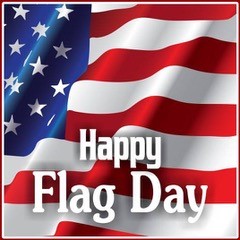Legacy Worthy Flag: American Flag USA June 14th

Legacy Worthy Flag: American Flag USA June 14th
Legacy Worthy Flag: The American Flag is a symbol of freedom, courage, and patriotism. It represents the core values of the United States of America and has a deep-rooted history that dates back to the country’s inception. The Stars and Stripes have evolved over time, reflecting the changing landscape of the nation.
As we celebrate Flag Day on June 14th, it is essential to understand the significance of this iconic emblem. From its humble beginnings to becoming a unifying symbol of American pride, the American Flag has witnessed the country’s triumphs and tribulations. There is interesting history and evolution of the American Flag, the symbolism behind its design, and there is importance of honoring the sacrifices made to protect it. Let us delve into the legacy-worthy flag that stands tall and proud, representing the land of the free and the home of the brave.
Celebrate Flag Day with the Legacy Worthy American Flag! Discover the history and significance of the USA’s most beloved symbol.

#1 The History and Evolution of the American Flag
You’re probably familiar with the stars and stripes, but did you know that the American flag has a rich history and has gone through many changes over the years? The first American flag was created in 1777 during the American Revolution. It consisted of 13 stripes, alternating red and white, and a blue field in the upper left corner with 13 white stars representing the 13 colonies. The design was meant to symbolize the unity of the colonies in their fight for independence.
Over the years, as more states were added to the Union, the design of the flag changed to incorporate the new states. In 1818, Congress passed a law that set the number of stripes at 13 to represent the original colonies, and the number of stars to match the number of states. Today, the American flag consists of 50 white stars on a blue field, representing the 50 states, and 13 horizontal stripes, alternating red and white, representing the original 13 colonies. The American flag is a symbol of freedom and democracy, and has come to represent the values and ideals of the United States.
#2 The Symbolism of the Stars and Stripes
Get ready to appreciate the meaning behind every star and stripe on the iconic flag of the United States. The stars on the American flag represent the 50 states of the country, while the stripes symbolize the original 13 colonies. The stars are arranged in a specific pattern, with each one representing a state in the order that they joined the Union. The blue background behind the stars is called the canton, which signifies the Union itself.
The stripes on the flag are equally significant, representing the original colonies that fought for independence from British rule. The red stripes signify valor and bravery, while the white stripes represent purity and innocence. The flag as a whole represents the unity of the United States and the values that it stands for, such as freedom, justice, and democracy. By understanding the symbolism behind each element of the flag, we can appreciate the legacy and importance of the Stars and Stripes.

#3 The Importance of Flag Day in the United States
Celebrate the significance of this national symbol by learning about how Flag Day is observed in the United States. Flag Day is celebrated on June 14th every year in the United States. It is a day dedicated to honoring the American flag and the values it represents. The day is a reminder of the sacrifices made by those who fought and died for the ideals of freedom, democracy, and justice that the flag symbolizes.
On Flag Day, Americans display the flag at their homes, businesses, and public buildings. Many communities also hold parades and ceremonies to honor the flag and those who have served their country. It is a day to reflect on the importance of the flag and what it means to be an American. As we celebrate Flag Day, let us remember the sacrifices made by those who have served our country and the values that the American flag represents.
#4 Honoring the Sacrifices Made to Protect the American Flag
Take a moment to appreciate the sacrifices that have been made to protect the symbol that represents the values of freedom and democracy that we hold so dearly. The American flag is not just a piece of cloth, but a powerful symbol that millions of people have fought and died for. From the American Revolution to the current War on Terror, countless soldiers, sailors, airmen, and Marines have put their lives on the line to defend the flag and the principles it represents.
These sacrifices should never be taken for granted. We owe it to those who have served and sacrificed to honor their memory by respecting the flag and all that it stands for. Whether we fly the flag at our homes, schools, or places of work, we should always remember the men and women who have fought and died for our freedom and our flag. Only by doing so can we truly appreciate the legacy of the American flag and the sacrifices that have been made to protect it.
#5 The American Flag as a Unifying Symbol of Freedom and Patriotism
You can feel pride and unity when you see the stars and stripes waving in the wind, reminding us all of the freedom and patriotism that we share as Americans. The American flag is a powerful symbol that represents our history, values, and ideals. It is a unifying force that brings us together, regardless of our differences, and reminds us of the sacrifices made to protect our freedoms.
The American flag is more than just a piece of cloth. It is a symbol of our nation’s resilience, perseverance, and strength. It represents the sacrifices made by the men and women who have fought to defend our country and preserve our way of life. It is a reminder of the values that we hold dear, such as liberty, justice, and equality. The American flag is a legacy worthy symbol that will continue to inspire generations of Americans to come.
#6 FLAG QUESTIONS
#A. Can the American flag be flown at night without a light?
No, the American flag cannot be flown at night without a light. It is required by law to be illuminated if displayed during nighttime hours. Failure to do so is considered disrespectful to the flag.
#B. What is the proper way to dispose of a damaged American flag?
The proper way to dispose of a damaged American flag is by burning it in a respectful manner. This is done as a way to honor the flag and the country it represents.
#C. Are there any specific guidelines for displaying the American flag at home?
There are guidelines for displaying the American flag at home, such as hanging it vertically or horizontally, but never upside down. It should also be illuminated at night and not touch the ground.
#D. Can the American flag be used for advertising or commercial purposes?
No, it’s not appropriate to use the American flag for advertising or commercial purposes. The flag is a symbol of national pride and shouldn’t be used as a marketing tool. This goes against the Flag Code.
#E. Is it illegal to alter the design of the American flag?
It is not illegal to alter the design of the American flag, but it is generally considered disrespectful. The flag code recommends against altering the flag’s colors or design, and it should always be treated with dignity and respect.
The American flag is more than just a piece of cloth with stars and stripes. It represents the history, sacrifice, and struggles of the United States. The symbolism of the stars and stripes has evolved over time, but the flag remains a unifying symbol of freedom and patriotism.
Flag Day is a time to reflect on the importance of the American flag and honor those who have fought to protect it. As we celebrate the legacy of this iconic symbol on June 14th, let us remember the sacrifices made to ensure that it continues to wave proudly as a symbol of hope and unity for generations to come.
The Star-Spangled Banner
O say can you see by the dawn’s early lightWhat so proudly we hailed at the twilight’s last gleamingWhose broad stripes and bright stars through the perilous fightO’er the ramparts we watched, were so gallantly streaming?And the rocket’s red glare, the bombs bursting in airGave proof through the night that our flag was still thereO say does that star-spangled banner yet waveO’er the land of the free and the home of the brave
“The Star-Spangled Banner” by Francis Scott Key



